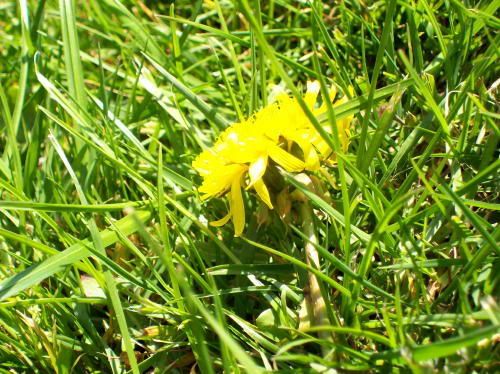A weed is simply a plant growing in the wrong place.
Today the Busy Beez went on a jolly, joining other primary schools across the UK for The Great Plant Hunt Week. In this mass observation study looking for ten common plants, our Beez searched in the open spaces and hedgerows which our school is lucky to be surrounded by.
The first to be spotted, and lets face it you can't miss them at the moment, was the humble Dandelion. A hardy perennial whose flowers are light-sensitive, opening in the early morning and closing in the evening or in gloomy weather. The name Dandelion comes from the French 'dents de lion' (teeth of the lion). At this time of the year Dandelions are extremely invasive, but they are an important source of nectar for our precious bees.
In folklore, it is said that if you blow the fluffy seedheads of the flower away in one go it will make a wish come true. Another tale is that it can tell you the time by the amount of puffs it takes to blow away the 'clock'.
On the bank by the nursery playground, our hunters found Bellis Perennis, or Daisy. This tiny flower is a favourite among the girls who make chains with them. The name daisy originates from the Anglo-Saxon word 'daes eage' which translates to 'days eye', referring to the flower opening at dawn.
It was said that in Roman times, bandages were soaked in the astringent juices of the daisies and applied to the wounds of the soldiers.
Among the other plants hunted down were Sorrel also known as dockweed, the leaves the broad-leaved variety are often used as a soothing treatment for stinging nettles. Fortunately these two plants often grow close together.
The flowers of the Elder were next. The strong-smelling foliage of the Elder was once hung on the mane of horses to help keep flies at bay. These days the flowers and berries are used for medicine and culinary purposes.
Among the masses and masses of dandelions and speedwell we spotted our next flower. Garlic Mustard is a favourite food of the pieris napi butterfly, and the perfect home for laying their eggs. The flowers are often pollenated by midges, which may be why we were so bothered by them on our walk.
We have a strong suspicion that some of the flowers have yet to appear due to the late season. These elusive blooms include the red clover, self-heal, silver birch and white campion. It will be interesting to see how the rest of the UK report their findings, and compare them to our own.
















No comments:
Post a Comment